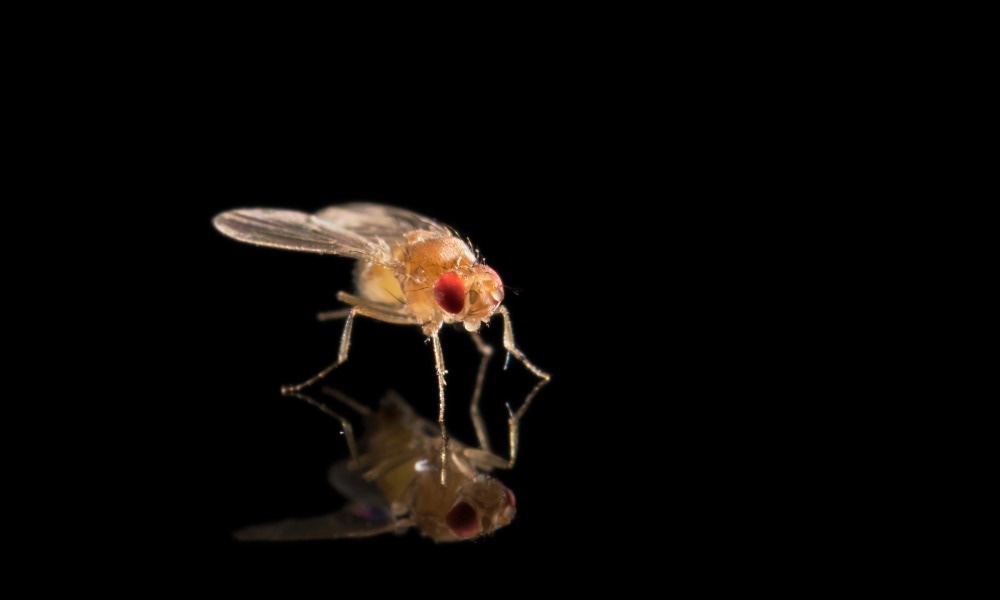There are several “selfish genetic elements” in the human genome that do not appear to benefit their hosts but instead appear to exist only to reproduce themselves.
 Rochester researchers used fruit flies as model organisms to study Segregator Distorter (SD), a selfish genetic element that skews the rules of fair genetic transmission. Image Credit: University of Rochester photo / J. Adam Fenster.
Rochester researchers used fruit flies as model organisms to study Segregator Distorter (SD), a selfish genetic element that skews the rules of fair genetic transmission. Image Credit: University of Rochester photo / J. Adam Fenster.
By altering sex ratios, reducing fertility, generating dangerous mutations, and even possibly causing population extinction, selfish genetic elements may cause havoc.
Daven Presgraves, a University Dean’s Professor of Biology, and Amanda Larracuente, an associate professor of biology from the University of Rochester, have employed population genomics for the first time to shed insight on the development and effects of a self-centered genetic component known as Segregation Distorter (SD).
According to a study that was published in the journal eLife, genetic diversity and chromosomal structure have undergone significant modifications as a result of SD.
A genome-sequencing first
Fruit flies were utilized as model animals by the researchers to examine SD, a selfish genetic component that distorts the laws of fair genetic transmission. Because fruit flies have such brief reproductive cycles—less than two weeks—scientists can produce generations of the flies in a comparatively short period. Fruit flies carry roughly 70% of the same genes that cause human diseases.
Mendel’s laws of inheritance predict that female flies pass on SD-infected chromosomes to around half of their offspring. However, because SD destroys any sperm that do not include the selfish genetic component, males pass SD chromosomes to almost all of their offspring.
How does SD achieve this?
Because it changed into a “supergene,” a collection of selfish genes on a single chromosome that is inherited collectively.
For many years, scientists have been aware that SD changed to become a supergene. However, this is the first time they have employed population genomics—the study of genome-wide patterns of DNA sequence changes across people in a population—to investigate the dynamics, evolution, and long-term impacts of SD on the evolution of a genome.
This is the first time anyone has sequenced the whole genomes of SD chromosomes and therefore been able to make inferences about both the history and the genomic consequences of being a supergene.”
Daven Presgraves, Biologist, Professor, and Dean, Biology, University of Rochester
An evolutionary downfall on the horizon
Being a supergene has the benefit of allowing numerous genes to work together to almost perfectly transmit SD to offspring. However, as the researchers discovered, having a supergene has significant disadvantages.
Chromosomes from the mother and father trade genetic material during sexual reproduction to create novel genetic combinations that are particular to each baby. The chromosomes often align correctly and cross across. Recombination, also known as the exchange of genetic material, has long been understood by scientists to be important because it enables natural selection to remove harmful mutations and promote the spread of advantageous ones.
The fact that SD does not go through recombination, as the researchers demonstrated, is one of the key costs of its near-perfect transmission.
The selfish genetic element prevents recombination to guarantee that it is handed on to all of its descendants, giving it a temporary transmission advantage. However, SD is not forward-looking since it has accumulated far more harmful mutations than normal chromosomes as a result of blocking recombination.
Without recombination, natural selection can’t purge deleterious mutations effectively, so they can accumulate on SD chromosomes. These mutations might be ones that disrupt the function or regulation of genes.”
Amanda Larracuente, Associate Professor and Biologist, Department of Biology, University of Rochester
According to Presgraves, the absence of recombination may potentially be the cause of SD’s destruction.
“Due to their lack of recombination, SD chromosomes have begun to show signs of evolutionary degeneration,” Presgraves concludes.
Source:
Journal reference:
Navarro-Dominguez, B., et al. (2022) Epistatic selection on a selfish Segregation Distorter supergene – drive, recombination, and genetic load. eLife. doi.org/10.7554/eLife.78981.